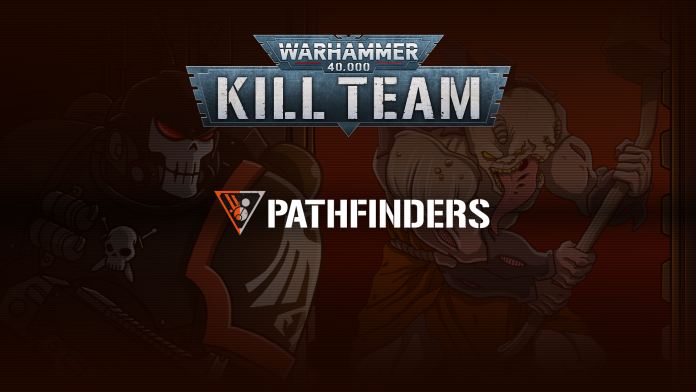The 2024 Edition of Kill Team has overhauled the game, changing rules, datasheets, and bringing with it an updated set of rules for every team in the game. In this series we’re taking a look at each team, how they’ve changed, and what it means for how they play in the new edition.
Welcome back Kill Teamers, to the re-review of the Pathfinders, a team near and dear to this author’s heart. The Greater Good’s forward roaming scouts have come into Kill Team 2024 thoroughly changed, and probably worse for wear. For the T’au faithful, there are a handful of changes that look to still give the team some play, and our matchups against Astartes are probably still good. For everything else…we’ll make it through for the Greater Good.
In this re-review, we’ll be going over the broad strokes of the changes, and trying to recontextualize the team in the new edition. Especially noting any larger changes, that are coming down the line.
Before we dive in, we’d like to thank Games Workshop for providing a preview copy of these rules for Review purposes.
The Video Version of the Review
We have a video version of this review courtesy of Can You Roll a Crit?
Team Overview
We’ve moved to the 12 operative loadout, which goes down to 11 when we take the Recon Drone. Still backed up by Markerlights, but made much worse against potentially mobile targets which we’ll explain momentarily. We have gained the Infiltration archetype, while keeping the Recon archetype which may end up being a net positive, as they seem to be strong archetypes this edition.
Abilities
Markerlights
Operatives with the markerlight action can tag a visible enemy operative to give that operative a markerlight token. We can’t do it while in opposing control range, with 1 notable exception, and if you shoot in the same activation you markerlight that operative as well. The table and its buffs to your shooting profiles are as follows:
- Saturate
- Balanced
- Can’t be Obscured
- Seek Light
Notably missing is the +1 ballistic skill of the old table, which was so crucial for the team that relies on shooting, and hits on 4s. Additionally whenever an enemy operative performs the Dash, Charge, Fall Back, or Reposition actions at the end of that activation they shed a markerlight. Ultimately this puts our gimmick in a substantially worse place, with a much lower ceiling than before. We can still output damage against a single Astartes, but our wider matchups look much harder. As far as the old markerlight decay through turns, that has gone away so the cadence is similar but the loss of BS 3+ is a big one.
The Operatives
We’re still at the same 7-wound, 5+ save, 4+s to shoot, 5+s in melee, and 2APL chassis. We’ve narrowed down some of the odder profiles, and our drones remain reasonably tough with 4+ saves. Notably our drones no longer Fly and have to play the same movement game as everyone else, while also counting as 1APL for control purposes. Obviously those drones can only perform charge, dash, fall back, fight, reposition, shoot, and their data card actions, with some terms and conditions.
Shas’la Pathfinder

An operative that mostly stayed on the sideline last edition has been given a new lease on life with Group Activation and Fearless on the Frontline. This means a pair of Shas’las are about the only way we can push an operative to three markerlight tokens in “one” activation window. Additionally, being able to drop markerlights in control range is an ability given only to the Shas’las, and cheaper fall back has been historically powerful. It’s possible that a pair of these make sense, given that our drones have fewer high points now and mission control feels more important than ever.
Shas’ui Pathfinder

Unfortunately for us our Shas’ui were not gifted the third APL of other teams, nor did our Art of War ability escape the KT24 nerfbat. As a Strategic Gambit once per game we can call for one the titular Mont’Ka and Kauyon. Mont’ka was struck pretty hard, now only giving us an extra 1” of move stat regardless of order, while Kauyon now lets us do a free Markerlight action while on a conceal order. Neither of these feels particularly compelling, but Kauyon on tp2 could allow you to sneakily play the mission while markerlighting expended operatives. On the brighter linings, we still hit on 3s so we can still put strong pulse fire down range.
Assault Grenadier Pathfinder
Another operative hurt in the KT24 change over, losing our helmet’s special optics that let us ignore APL and BS penalties. Instead we’ve now gained access to infinite frag and krak grenades hitting on 3s, which can also benefit from markerlights! Our Fusion grenade remains devastating, and with bonded could be a little stronger in some cases.
Blooded Pathfinder
Our veteran lost the 4+ save that her metallic Bucky Barnes arm gave her, and gained a wound in compensation. Not much of a trade there, but as one of the few permanently Silent weapons it may end up being a moot point for her. Being a Veteran you can use the opposite Art of War ability the turn that it is called, which is cute. However we’re probably using her as a firing platform with her 3+s to hit and silent pulse carbine. Our melee profile is still a pip better in all respects compared to other pathfinders, and that has value, just less so than our big gun.
Comms Specialist Pathfinder
The murder comms man looks exactly the same, with the 4+s to hit, and the same 6” range restriction on the APL bubble. The one change here is that we have the 3” buff from the universal equipment letting us dole our +1APL with a 9” range. A potent change that lets an elevated Comms Specialist markerlight and signal from safety.
Drone Controller Pathfinder
An operative with some huge changes, no longer granting any form of forward deployment! However with a more passive turn 1, it should matter less. Instead the Drone Controller ability lets us use the Savior Protocol ploy for 0CP, and adds 2” of move to all friendly drones in the kill zone. Remote Pilot is our new unique ability, that can be used twice on different drones, and allows drones to do 1 free action that cannot move more than 2”. This is mostly a buff in the context of the new edition, as the forward deploys are not necessary, and being able to have both gun drones fire again in a turn is very potent. Especially since those shots from both the recon and gun drones will be at full ballistic skill! During a kauyon turn a drone controller can use a high-intensity markerlight and 2 remote pilots to dump a truly insane number of dice downrange at a single target (12+).
Marksman Pathfinder
Our rail rifle specialist that ignores hit stat changes, remains an always take as ever. One of our few 3+s to hit, and still able to stay permanently silent in Dart Round Mode with a slightly worse profile 3/4 instead of 3/3+2MW. The money remains in our Standard firing with four attacks on 3+s with 4/4 damage, Devastating 2, Lethal 5+, and Piercing 1. The changes to Bonded mean we’re mostly going to be using our Target Analysis Optic equipment to tag an opponent that has already been markerlit. As re-rolls are more valuable to use than Accurate 1 especially with lethal 5+ to snag more damage.
Medical Technician Pathfinder
The standard murder medic, with a big gun, markerlight, and bog standard medic abilities. We can’t resurrect drones, and we can’t heal opponents who’ve been saved in the same turning point. Overall an excellent choice when you expect to be shot, and so-so otherwise.
Transpectral Interference Pathfinder
A standard 4+ ballistic skill chassis, a markerlight, and two abilities. Multi-Dimensional Vision lets us ignore obscurity for 1AP in what used to be a built-in passive, while System Jam continues to be a reverse comms ability that requires us to be on an engage order. The ability to remove APL from opponents is potent and even with all the changes you should generally take this operative for that ability at least.
Weapons Expert Pathfinder
The Rail Rifle remains exactly as it was: a big gun with two profile choices. The Ion Rifle sees big losses, with its Hot profile no longer doing more damage, and gaining Lethal 5+ alongside its Piercing 1. With markerlights no longer getting us to 3+s to hit, Hot is substantially more dangerous, able to injure us at a moment’s notice. Ion’s with a re-roll are marginally more effective against marines, while rails hit notable breakpoints more reliably. This generally means the rail rifles will be the better pick as they put your gunner at less risk, and with similar output.
Mb3 Recon Drone
Our big boy drone sees a massive ability rework, no longer giving us a free recon action, while keeping its 4+ save and 12 wounds. The big news being we’re 3APL now, with absolutely nothing cool to use it on. Instead of group activation it now has the markerlight action, and projects those markerlights with its analyse ability adding those to all opponents within 3” of the original markerlight target. Our Burst Cannon remains fairly powerful with a focused and sweeping profile on offer. Focused is 5 dice, hitting on 4s, with Ceaseless, Punishing, and Heavy (Reposition only). Sweeping loses a dice for Torrent 1”. Ultimately this operative has a sidegrade, gaining mobility when shooting, but losing the incredible ability to group activate. Perhaps as a damage output piece with the new drone controller the recon drone could remain a strong pick.
Mv1 Gun Drone
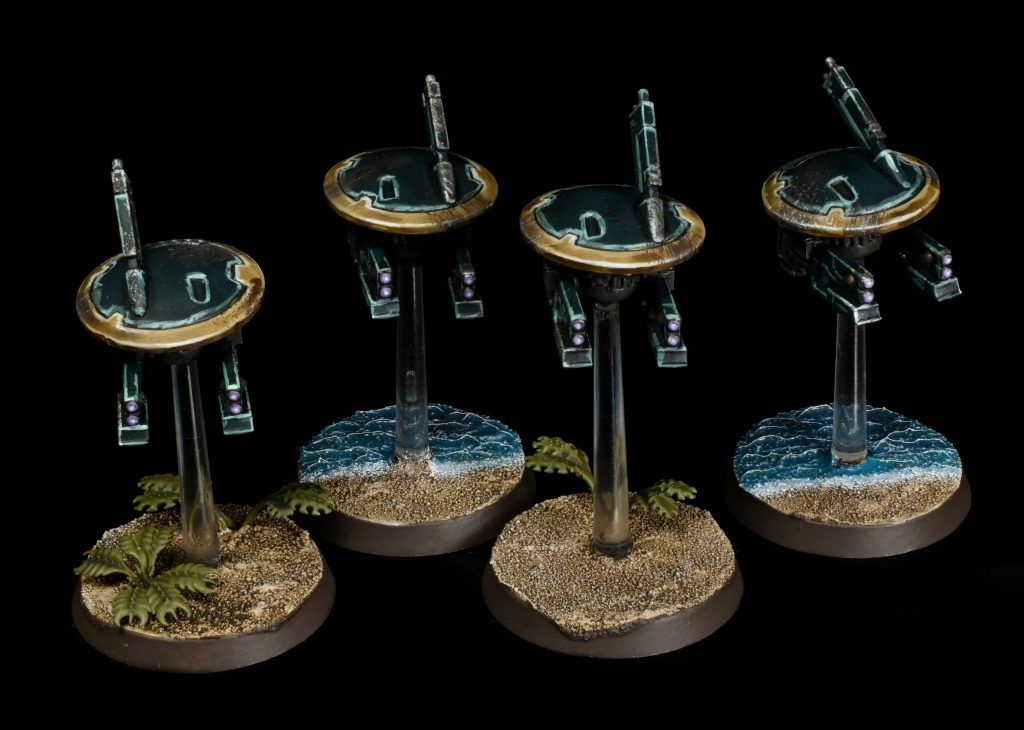
Our agro drone, able to shoot with Ceaseless instead of Relentless. If we bake in the ability of the drone controller, we’ve got an 8” move drone, that can drop a bucket of dice down range, that can shoot twice a turn with Remote Pilot. Interestingly enough the gun drone now wants to see the second markerlight token, getting the drone to an approximation of the relentless of old. Even more so when you’re bonded to a friendly.
Mv4 Shield Drone
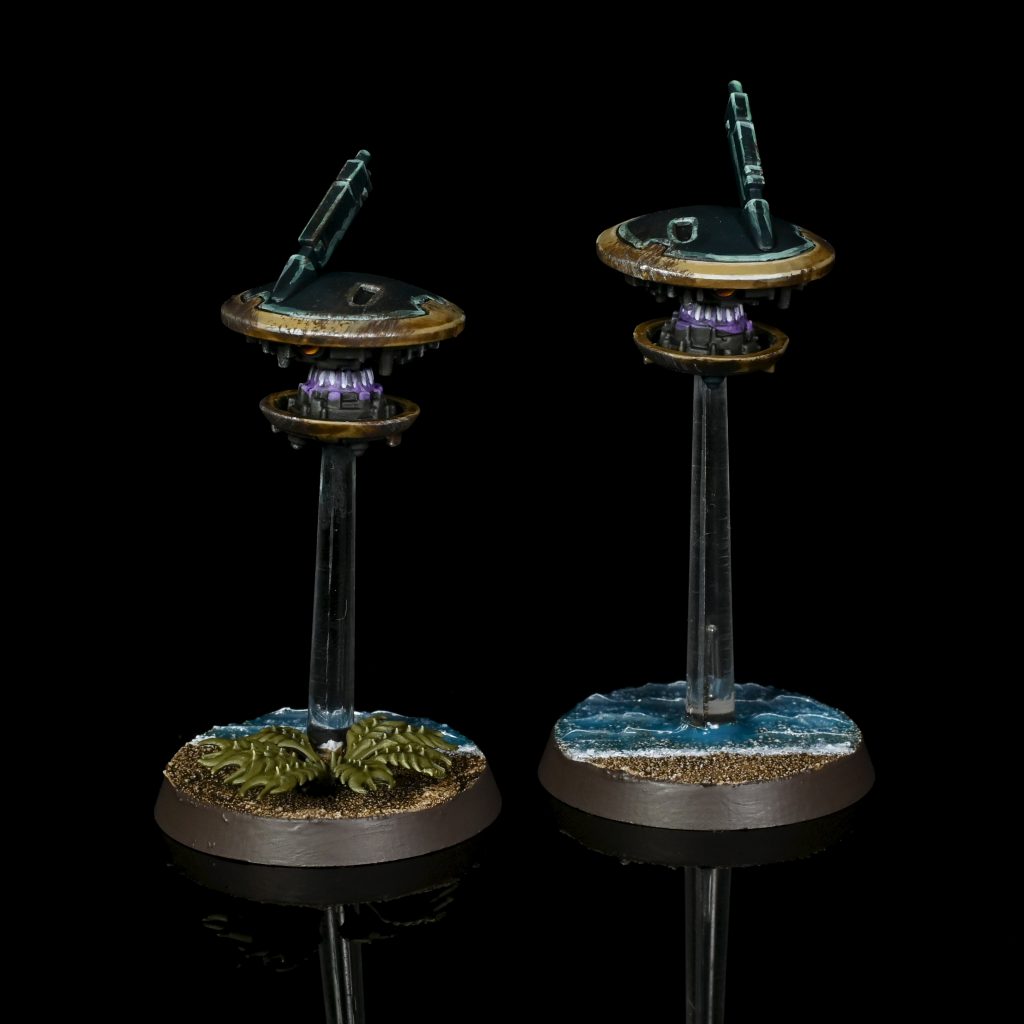
Free savior protocols, with a 4+ save that ignores piercing, and the ability to shrug 1 normal damage die. The sheild drone is a much more potent anti-shooting piece that works like a second medic in a shootout. Hilariously enough if you park it inside of a portable barricade it can have a 3+ save for those shenanigans. Against teams with weak melee charging a shield drone into those operatives can lock those operatives up with a drone that shrugs off attacks, and wastes their time.
Mv7 Marker Drone
Our friendly marker drone continues to drop 2 markerlight tokens in this edition, which is especially useful against Astartes who need to stage up. This was a personal favorite in KT21, but considering how much less potent markerlights are, I’ll probably be looking at the offensive drones before dusting off the marker drone.
Mv31 Pulse Accelerator Drone
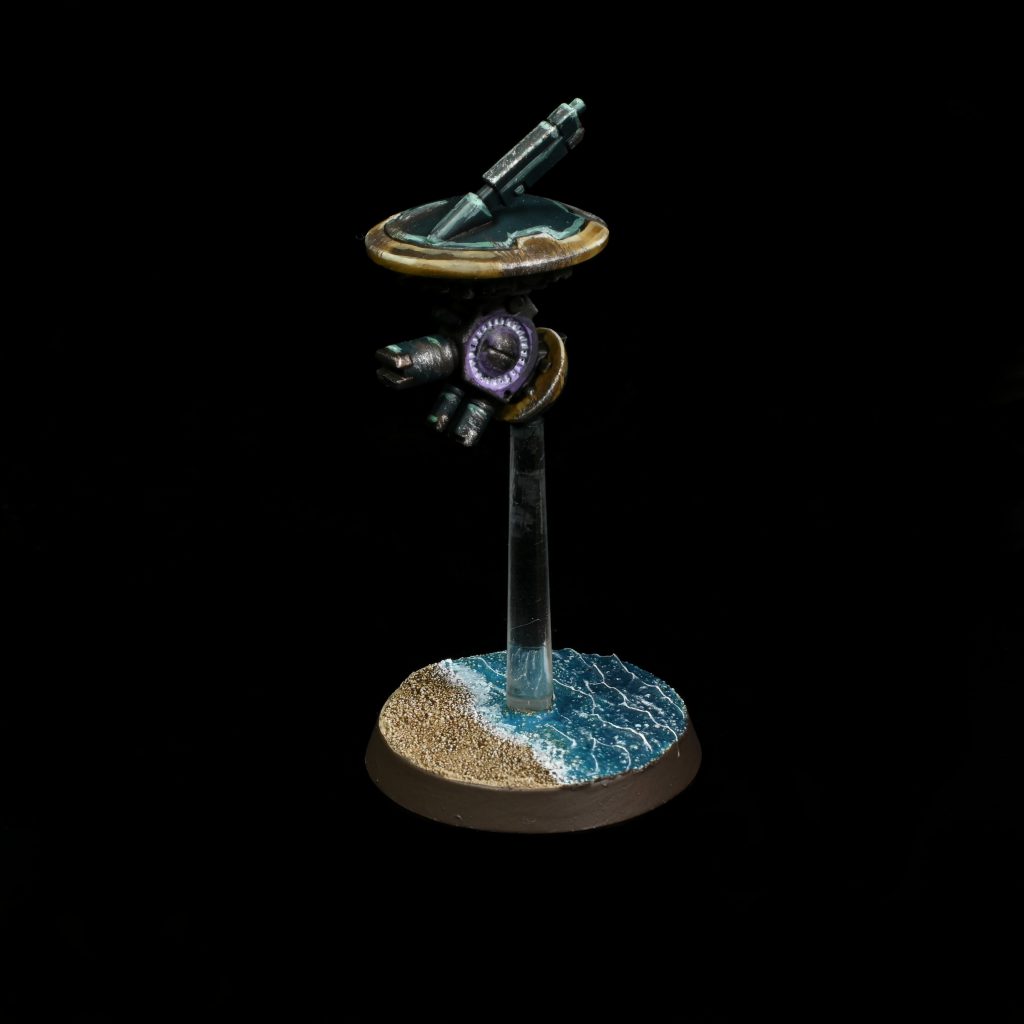
A drone that was probably never taken in all of competitive play, returns with a new much more powerful Pulse Accelerator ability that still costs 1AP. Friendly operatives within 3” of the drone firing a “pulse” weapon gain Lethal 5+ and Severe which may actually be a way to push our damage output to acceptable amounts. There is an amusing chain of activations with a drone controller dropping recon drone’s analyse’d markerlights, heavy markerlighting another target, activating pulse accelerator, only to have a pair of shas’la move into acceleration range to lay down a veritable wall of death. Whether or not that kind of set up makes sense to work towards remains to be seen, but maybe the nerfs have given new life to the humble pulse accelerator drone.
Mv33 Grav-Inhibitor Drone
Grav inhibition is now a passive ability that drops 2” of movement from any enemy operative moving within 6” of the grav drone. Between the new barbed wire, mines, and this ability we may finally have some tools that could actually cause melee teams to take a second guess when coming into our lines. Additionally while fighting within 6” of the drone, we also knock 1 from the hit stat of opposing operatives, making our shield drone melee annoyance that much better. A potent trick now that all teams mostly hit on 3s.
The Ploys
The theme of nerfs, continues on into our strategy ploys without stopping! Recon Sweep is now allowed again on turning point 1, but only works along 1 board edge really putting a cramp to our mobility. This means we’re picking the left or right flank as a strong side, but with the change to 3 objectives, we’ll generally be moving towards the opposing drop zone to put pressure on the backline objective. Suppressing Fire is a brand new ploy, for when opponents don’t shoot at the closest engaged pathfinder. When doing so opponents cannot re-roll attack dice. Specifically ignoring concealed operatives, and obscured operatives in this closest target evaluation. This is a neat defensive ability, that is only useful in shootouts really. Bonded makes its diminished return granting Accurate 1 which is technically worse than balanced more often than not, especially when looking at weapons with lethal 5+ where we want to crit fish. Take Cover is back unchanged, and probably still pretty bad, as we’re not losing in a shootout.
Firefight ploys make returns with a bevy of changes. A Worthy Cause now lets us take a free mission action at the beginning of the firefight phase. Notably if we stage 4 apl on a central objective, we can line up a stolen mission action on tp2 pretty easily, especially with some drone back up. Supporting Fire continues the tradition of letting us shoot into enemy operatives who are engaged with friendly operatives, as long as they are within 6” of us. Powerful especially when opponents try to leapfrog from our operatives. Saviour Protocols is now a ploy that lets our drones dive in front of enemy gunfire, barring explosive weapons with Blast or Torrent. Point-Blank Fusillade replaces our pair of fleeing melee ploys and allows us to use a ranged weapon to retaliate in melee, though we cannot block or use grenades in this fashion. Honestly this one is one of the more disappointing choices as we die in 2 hits to most melee specialists. Doing 4 damage to a 10 wound operative compared to 2 is ultimately not that that big of a deal when we still need to land two 4 damage hits to take them out on the back swing. There is some value in sitting inside of a volkus stronghold to get the benefit of strikes first in combat, where someone charging us into PBF could actually lose a fight.
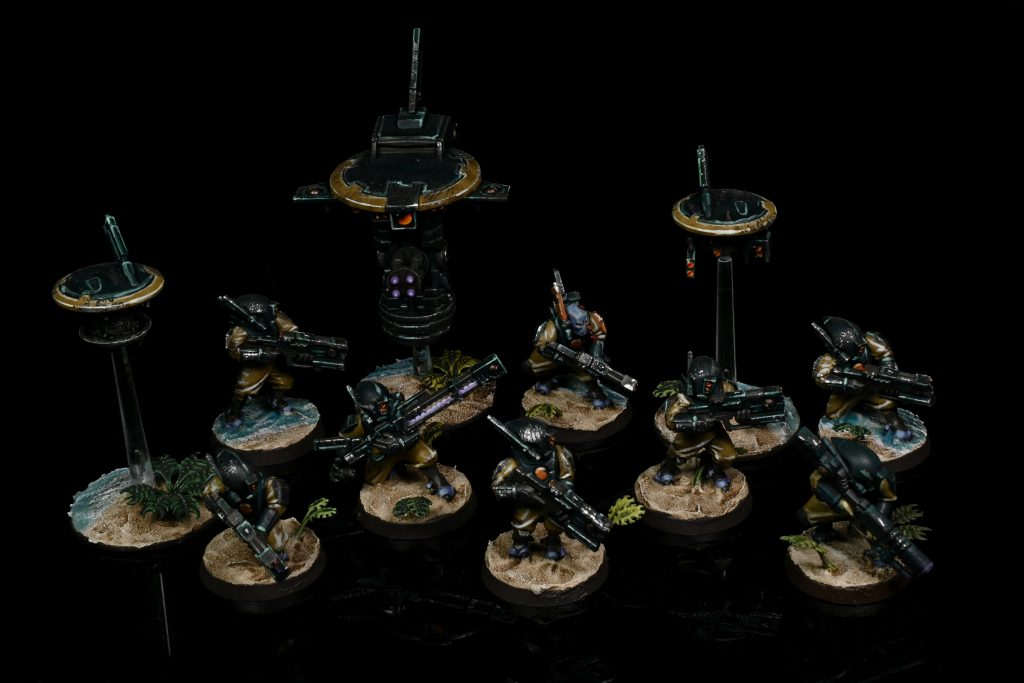
Equipment
Target Analysis Optic
Once per turn, you can treat an opponent as having 1 more markerlight when shooting at them. Having this float across the entire team is a reasonable sidegrade to having multiples of these, but the lack of two optics will be keenly felt.
Orbital Survey Uplink
Once per turn, instead of tagging your visible target, you can drop a markerlight on anyone in the killzone. Notably this does not stack with high-intensity markerlight, or the recon drone’s anaylse ability. Maybe not an always take, as it doesn’t change your markerlight output, just the trajectory.
High-Intensity Markerlight
Once a turn, you apply 2 markerlights instead of 1. Unfortunately this doesn’t seem to stack with the recon drone’s anaylse secondary targeting, so you can output 2+X secondary targets. Ultimately I can’t see us leaving home without this as you’ll need the output to get your balanced re-rolls against priority targets.
Photon Grenade
Once a turn, we can throw a photon grenade against a valid target. On a 3+ we strip 2” of move stat, and stop that operative from being able to Dash action. Cute and probably a take alongside the barbed wire against melee focused teams looking to walk into us. This can put a cramp on opponents, but since all operatives can move through friendlies we can’t road block people as hard.
Hunt Down the Gue’ron’sha
While we’ve lost a lot of power against horde teams, and the melee monsters, we’ve still got a solid shot against the Astartes of new KT24. We take the confirm kill tac op, make the tac op our primary op, and aim to stall kill grade with only 7 losses to their 3. Make sure to apply some positional pressure on tp1, and stage an operative up on the center objective after doing a repositioning to threaten A Worthy Cause to steal an early point without an early commitment. If the marine player bites, and commits some on board visibility, drop as many markerlights as you can spare, as we’ll need that count as high as possible to punch through that power armor. As far as our defensive play, since every marine two shots our boys, we’ll have barbed wire and barricades slapped up everywhere to slow down charge lanes. Which will also give us more room to drop markerlights on our opponents.
On TP2, we open up with Bonded, and Kauyon to give us team wide concealed markerlights as we commit to crit ops. While our rail guns, and drones commit massive walls of advanced weapons fire to tear down the ceramite incoming into our lines. Ideally we’ll find a couple spots to grab those confirm marker tokens, and make it into other turning points. If we can grab a cheeky turn 1 kill from some medic’d bait, and another pair of kills on turning point 2. We can then play the cowards for the rest of the game and win on a series of tie breaks.
Final Thoughts
I won’t lie; as a Pathfinder enjoyer over the life of KT21, writing this guide mostly left me bummed out. The team does have a set of new things to do, and I am genuinely looking forward to testing some of them. However it really seems to be such a huge downgrade over their old rules, with nothing gained in comparison to some of the other shooting hordes, like Inquisition Agents. Our re-rolls are much more tame compared to other teams, and we just can’t reliably put pulse fire into hard targets. Astartes may still be an approachable match up, and that may end up being to our credit. We are far more incentivized to stay concealed, and drop markerlights on opponents to line up big shots for our future rail guns.
Have any questions or feedback? Drop us a note in the comments below or email us at contact@goonhammer.com. Want articles like this linked in your inbox every Monday morning? Sign up for our newsletter. And don’t forget that you can support us on Patreon for backer rewards like early video content, Administratum access, an ad-free experience on our website and more.
